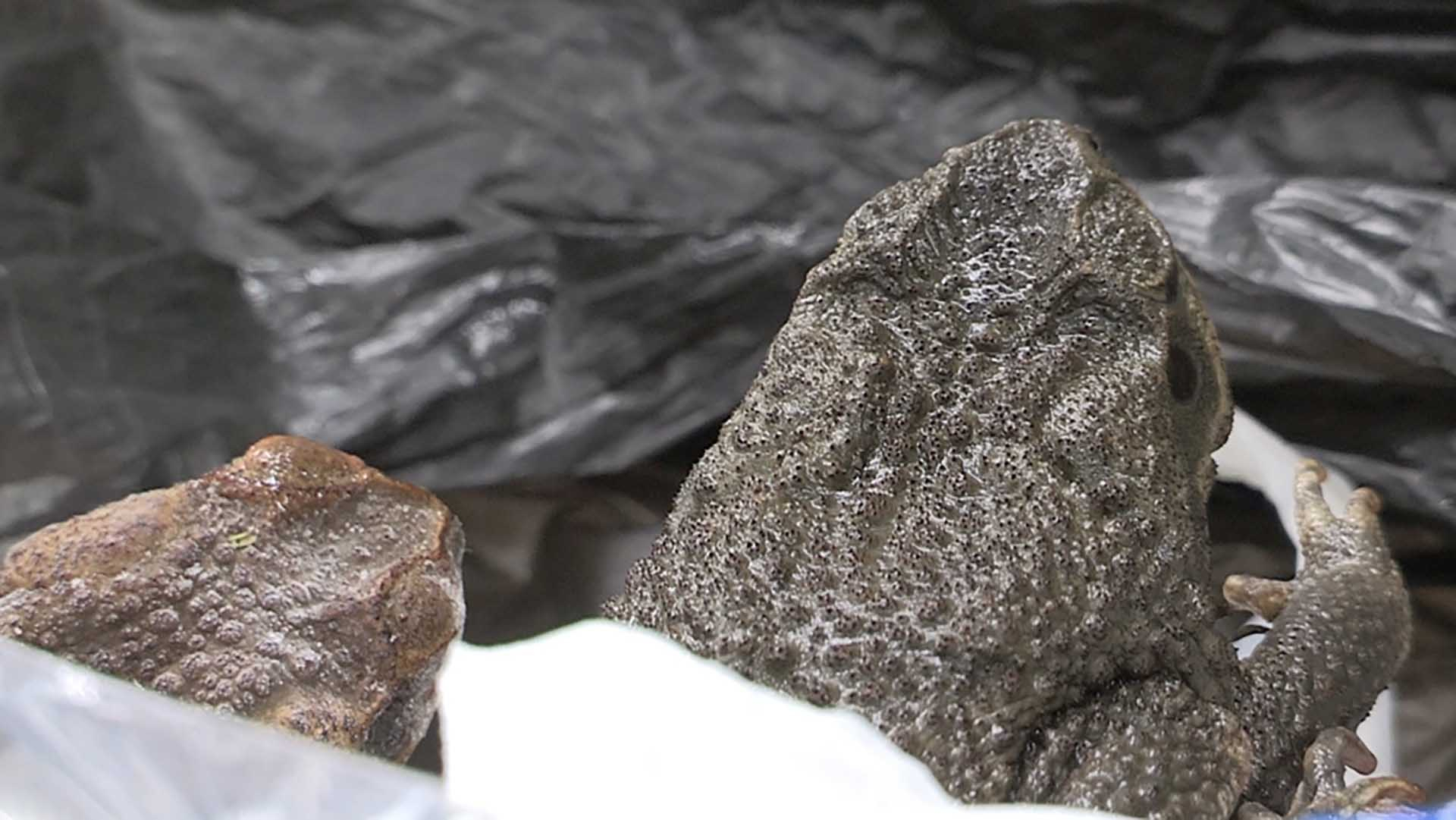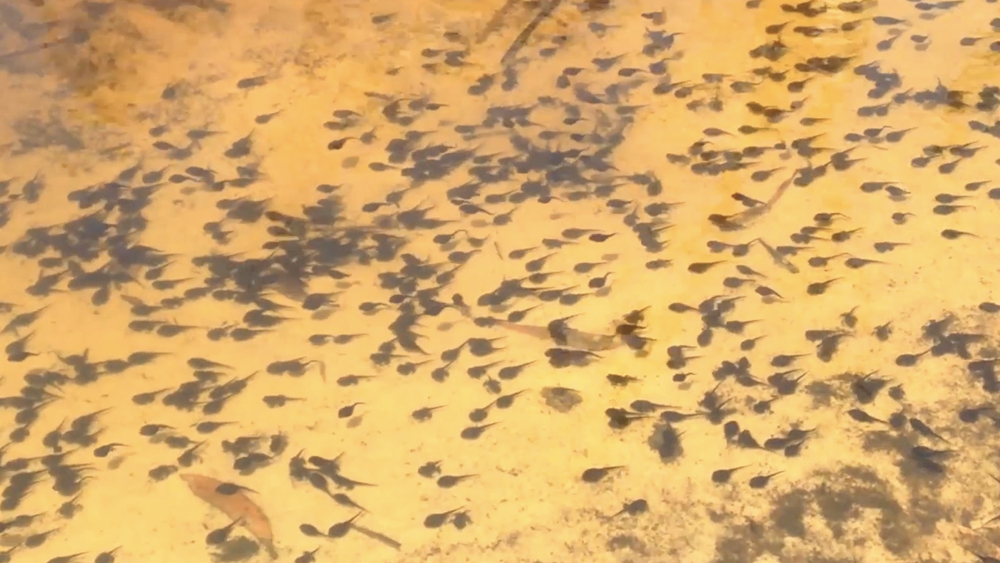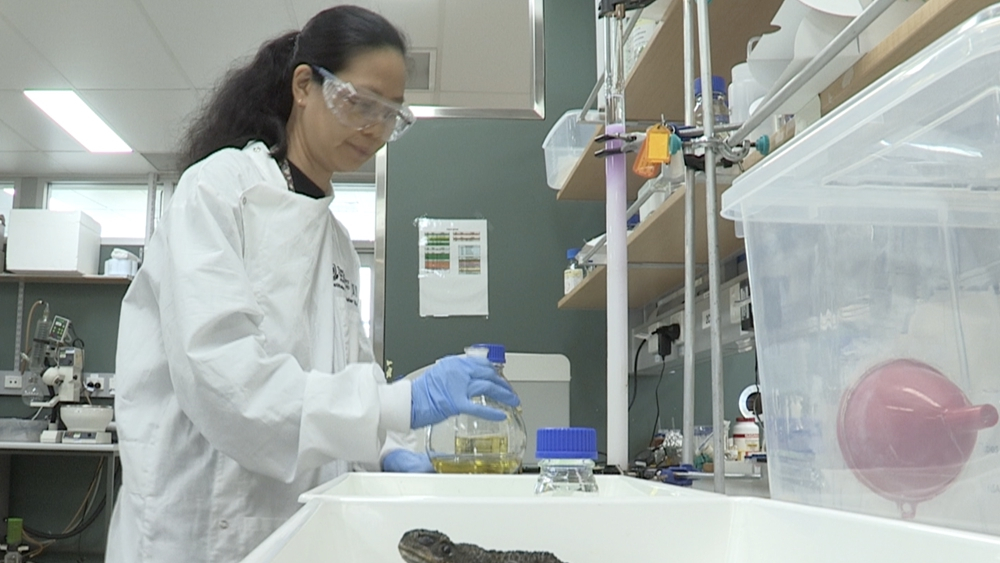
Asia Pacific
10:47, 28-Jan-2019
Australia deals with cane toad invasion
Updated
17:54, 30-Jan-2019
Greg Navarro
02:56

Inside a lab at the University of Queensland's Institute for Molecular Bioscience, researchers have discovered an advantage in the quest to slow the march of the cane toad, one of Australia's most invasive creatures.
"There is a chemical the eggs release into the water which acts as a scent or a cue that the tadpoles hone in on," said Rob Capon, a professorial research fellow at the University of Queensland.
The chemical is in the toad's toxin, which researchers extract from adult cane toads and put onto bait used to capture tadpoles. The tadpoles are then removed from waterways and killed.

Cane toad tadpoles at the laboratory of the University of Queensland. /CGTN Photo
Cane toad tadpoles at the laboratory of the University of Queensland. /CGTN Photo
"We think that taking out hundreds of thousands or even millions of poisonous tadpoles is an end in itself because those were poisonous tadpoles that had the capacity to poison aquatic life," said Capon.
Killing hundreds of thousands of tadpoles may sound like a lot, until you consider that female cane toads can produce tens of thousands of eggs at a time, and there are millions of the poisonous amphibians across the country.
Cane toads were introduced to Australia from South America eight decades ago to eat sugar cane beetles that threatened the Queensland crop. Instead, the toad population exploded.
Cane toads are equipped with a toxin used to deter hungry predators.

A researcher works to control the country's cane toad population at the University of Queensland. /CGTN Photo
A researcher works to control the country's cane toad population at the University of Queensland. /CGTN Photo
"When toads first arrive in new area local predators like the big lizards, the goannas, the snakes, some of the marsupial quolls, fresh water crocs, animals that eat frogs think that the toad is a new kind of frog and they eat it and toads have got a very distinctive poison," said Macquarie Professor Rick Shine.
"There are no native toads in Australia so our native predators can't deal with that poison. So we get massive mortality, 90 percent and 95 percent. These big predators are killed within a few months of the toads arriving, so it is a catastrophe."
While the research at the University of Queensland represents one of the best chances to reduce cane toad numbers, Capon admits it won't eradicate them.
"This is a first shot across the bow in the value of chemical ecology. So this is an illustration of if you know about an animal's chemical biology you can devise a solution for control," he said.

SITEMAP
Copyright © 2018 CGTN. Beijing ICP prepared NO.16065310-3
Copyright © 2018 CGTN. Beijing ICP prepared NO.16065310-3